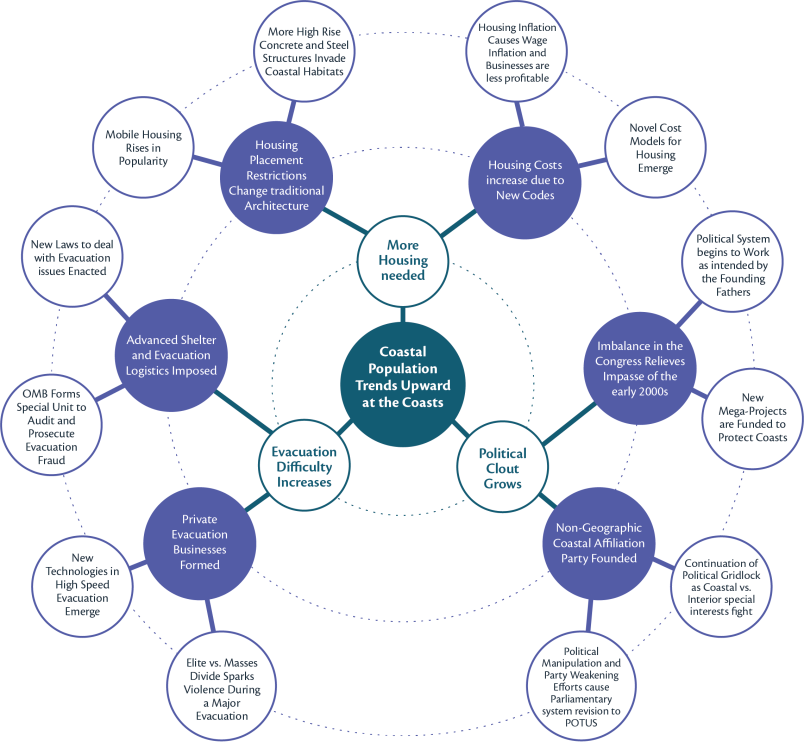Structured brainstorming that helps participants visualise how important trends or events might impact on the policy area.
On this page:
Why you should use it
What it involves
What you will get out of it
Ideal circumstances for use
Limitations
References, guides and key readings
Why you should use it
- Helps identify the impact on your policy area if an event or decision happens.
- Helps you think about how to manage the event or decision, or take advantage of any opportunities it presents.
What it involves
- Choose a trend, event or decision and place it at the centre of the wheel. Then explore with workshop participants the direct consequences of that event or decision and include the consequences in the ‘spokes’ of the wheel. Then consider the consequences of the first set of consequences and include them in the second circle of ‘spokes’. Generally three or four order of consequences are considered.
- A visual map is produced that concisely summarises the the thinking, interactions and emergent patterns (see the diagram below).

Source: Strategic foresight for international trade in animals and animal products from the Australian Government's Department of Agriculture and Water Resources.
What you'll get out of it
- Helps identify unintended consequences of an event or decision.
- Identifies and maps connections and causalities arising from an event or decision.
Ideal circumstances for use
- Works best for relatively narrow, well-defined changes.
Limitations
- It won’t reveal blind spots so the results may be limited to the obvious consequences of change.
References, guides, and key readings
The Futures Toolkit (page 110) from the UK Government Office for Science.
Strategic foresight for international trade in animals and animal products (pages 24–25) from the Australian Government's Department of Agriculture and Water Resources.
